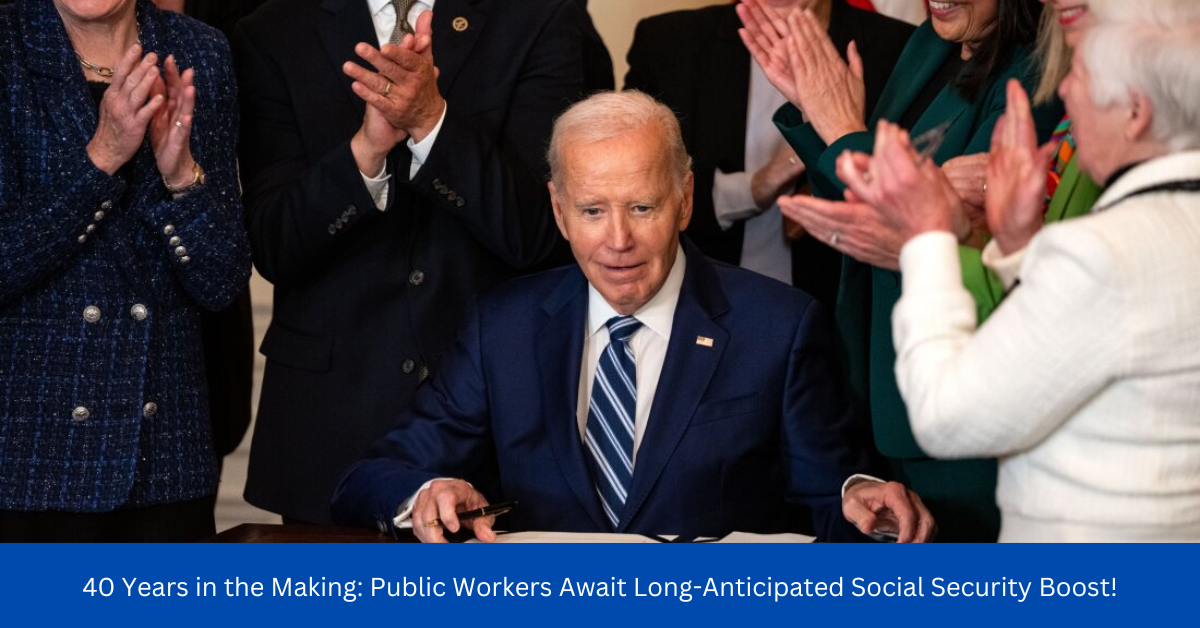For years, Bill Callahan, a retired schoolteacher from Middlebury, Connecticut, waited for Congress to pass a law that would fix an issue affecting his Social Security benefits. Like many other public workers, Callahan had his benefits reduced because he received a pension from his time working as a teacher.
Finally, after 40 years of waiting, the Social Security Fairness Act was passed, offering hope for millions of public workers who had been dealing with unfair reductions in their Social Security payments. But now, after the law’s passage, Callahan and others are facing a long wait before they see any of the money promised by the new law.
What is the Social Security Fairness Act?
The Social Security Fairness Act was designed to eliminate two rules, the Windfall Elimination Provision (WEP) and the Government Pension Offset (GPO), that reduce Social Security benefits for people who also receive a pension.
These provisions affected nearly 3 million Americans, including retired teachers, police officers, firefighters, and postal workers. Both WEP and GPO had long been a source of frustration for public sector employees, many of whom paid into Social Security during their working years but saw their benefits reduced because of their pensions.
The Promised Changes
The new law, which became effective in January 2024, was supposed to offer a solution to this problem. However, for many like Bill Callahan, the relief is taking longer than expected. The Social Security Administration (SSA) has said it could take over a year to make the necessary adjustments to benefits and pay out any retroactive amounts owed to affected workers.
The SSA’s challenge comes from the need to adjust both past and future Social Security benefits for roughly 3 million public sector retirees. Because the law is retroactive, SSA has to go back and calculate what workers were owed for the past months, adding in cost-of-living adjustments (COLAs) and dealing with additional complexities like spousal benefits.
Why is There a Delay?
One of the key reasons for the delay is that the SSA simply doesn’t have the necessary resources to handle the changes quickly. The agency says it doesn’t have the funding to implement the law efficiently. Additionally, the SSA has been struggling with staffing shortages and has been under a hiring freeze since November 2024. With fewer workers and limited funding, the SSA has a tough job ahead in recalculating and distributing payments.
“SSA’s ability to implement the law in a timely manner and without negatively affecting day-to-day customer service relies on funding,” the agency explained. Unfortunately, no additional funds were allocated to implement the law, making it even harder to meet the demand.
How Much More Will Workers Get?
The amount of extra money that each affected worker will receive depends on several factors, including the size of their pension and the type of Social Security benefits they receive. For some people, the increase will be small, but for others, it could be a significant amount. Some workers may see their monthly benefits rise by over $1,000, while others might receive only a small increase.
Frustration Among Public Sector Retirees
For Bill Callahan, the situation feels like a temporary fix at best. “At the end of the day, it’s going to turn out to be a temporary fix for three million citizens. Congress will devise another poorly conceived fix, and another group will become the new pariah,” he said. His frustration reflects the sentiment of many public sector retirees who feel that they have been ignored for decades, only to be given vague promises of relief that seem to take forever to deliver.
The delays also raise concerns about how long it will take to actually see the benefits. Callahan pointed out the complexity of the situation: “Think about it: one year of retroactive payments, additional two years of COLAs to calculate, spousal issues, etcetera.” With all these factors at play, it’s clear that the SSA has a huge task ahead of them.
The Bigger Picture: A Struggle for Fairness
While Callahan’s case is one example, it’s clear that the delay in implementing the Social Security Fairness Act affects a large group of workers who have been waiting for relief for a long time. The new law was meant to fix a system that many feel was unfair, but the slow pace of implementation is leaving many retirees uncertain about when, or if, they will see the benefits they’ve been promised.
These workers, who dedicated their careers to public service, are still waiting for the law to fulfill its promises. The delay is frustrating, but it also highlights the broader issue of how public sector retirees are treated when it comes to their Social Security benefits. Many have long felt that they are treated unfairly compared to private-sector workers who don’t face the same reductions in their Social Security payments.
Conclusion
The Social Security Fairness Act was a step in the right direction for millions of public sector workers who had long been waiting for fairer treatment. However, the reality of delays and complications means that many of these workers will have to wait even longer before seeing the benefits they’ve been promised. While the law provides a long-awaited fix, its slow implementation raises questions about how the system can be improved for all retirees in the future.
Disclaimer: This article has been meticulously fact-checked by our team to ensure accuracy and uphold transparency. We strive to deliver trustworthy and dependable content to our readers.

